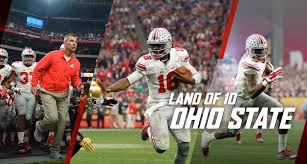Dorian Barney’s Analysis of Three Home Games: A Deep Dive into the Georgia Bulldogs
Dorian Barney, a former teammate of Julian Lewis, has garnered attention in the world of football for his keen analysis and in-depth knowledge of the game. Having experienced the highs and lows of college football firsthand, Barney provides a unique perspective on game strategies, player performances, and the dynamics of the sport. In this article, we delve into Barney’s analysis of three significant home games, with a particular focus on one of the most storied programs in college football: the Georgia Bulldogs.
1. Introduction to Dorian Barney and Julian Lewis
Dorian Barney, a former standout player in college football, made a name for himself not only on the field but also through his post-career commentary and analysis. Having played alongside Julian Lewis, one of the brightest young talents in football, Barney has an insider’s perspective on the intricacies of the sport. His analysis is highly regarded by fans and analysts alike, given his experience playing at a high level and understanding the technicalities that often go unnoticed by casual viewers.
Julian Lewis, a player who quickly rose to prominence due to his immense talent and leadership, forged a connection with Barney during their time together on the field. This dynamic duo showcased great chemistry, and their partnership allowed them to dissect opponents and develop strategies that proved effective in crucial moments. Their bond has translated into post-career collaboration, with Barney frequently using his insights to break down the nuances of the game from the perspective of someone who lived it.
2. The Significance of Home Games in College Football
Home games are some of the most critical matchups in college football. For players, the familiarity of their home field and the support of their fans can be a huge motivating factor. Home field advantage is often cited as one of the most influential elements of a game, as teams tend to perform better when they are in their comfort zone. However, Barney’s analysis reveals that this advantage is not always as clear-cut as it might seem.
A home game provides teams with several benefits, such as familiarity with the field conditions, a supportive crowd, and no travel fatigue. These elements can help boost a team’s morale and overall performance. However, as Barney explains, this does not guarantee victory. In fact, sometimes the pressure of playing in front of passionate home fans can be overwhelming, and this psychological factor can lead to mistakes and overthinking. Additionally, the strength of the opposition cannot be overlooked. A well-coached, talented team can often overcome the challenge of playing away from home and turn the tide of a game.
3. Breaking Down the Three Key Home Games
In his analysis, Dorian Barney focuses on three significant home games, all of which offer valuable insights into team performance, strategy, and individual player contributions. These games highlight different aspects of college football, providing a comprehensive look at the various challenges and opportunities that come with playing at home.
3.1. The Georgia Bulldogs vs. The Home Team: A Classic SEC Rivalry
The first game on Barney’s list is a thrilling matchup between the Georgia Bulldogs and the home team. Georgia, one of the premier programs in college football, is always a formidable opponent, and their clash with the home team proved to be a game full of drama and intensity.
Team Strengths and Weaknesses
The Georgia Bulldogs are renowned for their dominant defense, a hallmark of head coach Kirby Smart’s tenure. Barney highlights how Georgia’s defense has become one of the best in the country, with players like Jalen Carter and Nolan Smith leading the charge. These players, known for their ability to disrupt the opposition’s offense, were key contributors in the Bulldogs’ ability to stifle the home team’s attack.
However, Georgia’s offense is often criticized for being too reliant on its running game. While running back Kendall Milton has emerged as a standout player, there are times when the Bulldogs’ offense struggles to make plays in the passing game. Barney notes that this can sometimes put additional pressure on their defense to perform, which was evident in this particular matchup.
The Home Team’s Performance
The home team, a rising contender in the SEC, put up a fierce fight against Georgia. Barney points out that their offense was particularly effective in the first half, utilizing a fast-paced, pass-heavy scheme to keep Georgia’s defense on its heels. The home team’s quarterback showed flashes of brilliance, with pinpoint throws that put the Bulldogs’ secondary under pressure. However, as the game wore on, the home team’s lack of depth on the offensive line became apparent, and Georgia’s defensive line began to dominate the trenches.
Defensively, the home team struggled to contain Georgia’s running game. The Bulldogs’ offensive line, led by Broderick Jones, pushed forward with authority, opening up holes for Milton to exploit. Barney analyzes how the home team’s defensive front failed to adjust to Georgia’s power running attack, leading to several key long drives that ate up clock and wore down the defense.
Game Analysis and Key Moments
Barney identifies several key moments that shifted the momentum in Georgia’s favor. One pivotal play occurred late in the third quarter when Georgia’s defense forced a crucial turnover deep in the home team’s territory. This turnover led to a short-field touchdown that ultimately put the game out of reach.
The home team’s failure to capitalize on early opportunities was another key point in Barney’s analysis. Several dropped passes and missed field goals in the first half gave Georgia a chance to regroup, and by the time the second half began, the Bulldogs were fully in control.
3.2. A Close Contest Against a Strong Rival: The Rivalry Game
The second game on Barney’s list involves a classic rivalry matchup between the home team and a conference opponent that has historically posed a challenge. This game was expected to be a close contest, and it certainly lived up to the hype.
Offensive Strategy
The home team entered the game with a balanced offensive strategy, seeking to exploit mismatches against the rival’s defense. Barney analyzes how the home team’s offensive coordinator did an excellent job of mixing up play calls, keeping the opposing defense guessing. The home team’s quarterback was especially effective in spreading the ball around to multiple receivers, showing his ability to read the defense and make quick decisions under pressure.
Barney highlights the role of the home team’s wide receivers, who consistently won their one-on-one matchups. The quarterback’s connection with his receivers was key to moving the ball downfield, and several highlight-reel catches helped keep the game competitive.
Defensive Struggles
On the defensive side of the ball, the home team struggled to contain the rival’s dual-threat quarterback. Barney discusses how the defense failed to contain the quarterback’s mobility, allowing him to make plays with both his arm and legs. The defense’s inability to effectively spy the quarterback led to several big gains on broken plays, and this proved to be a critical factor in the game’s outcome.
In particular, Barney points out the lack of pressure on the quarterback, which allowed him to have ample time to find open receivers. The defensive line’s inability to generate consistent pressure led to long drives and key conversions on third down, which kept the rival team in the game.
The Turning Point
The turning point in this game occurred late in the fourth quarter when the rival team scored a go-ahead touchdown after a string of missed tackles and blown coverages by the home team. Barney notes that this was a textbook example of how small mistakes can compound in critical moments, costing a team a potential victory. The home team had an opportunity to respond, but their final drive fell short due to a miscommunication between the quarterback and his receivers.
3.3. A Statement Game: Dominating an Overmatched Opponent
The final game on Barney’s list is one in which the home team took on an opponent that was overmatched from the start. Despite the apparent mismatch, there were still valuable lessons to be learned from the game.
Offensive Execution
Barney emphasizes how the home team’s offense executed at a high level, with a focus on efficient ball movement and strong play calling. The home team was able to control the game from the opening whistle, using a heavy dose of both the passing and running game to wear down the opposition. The running back committee, featuring multiple players with fresh legs, kept the defense on its toes and consistently picked up positive yardage.
The quarterback, despite facing minimal pressure, was clinical in his decision-making. His ability to recognize mismatches and exploit them with accurate throws was a key factor in the blowout win. Barney notes that this game was a perfect example of a team executing its game plan to perfection against an inferior opponent.
Defensive Dominance
Defensively, the home team showcased its dominance, suffocating the opposing offense with relentless pressure. Barney analyzes how the defensive line was able to disrupt the quarterback’s timing, forcing him into uncomfortable throws. The secondary, meanwhile, displayed excellent coverage skills, and several interceptions allowed the home team to capitalize on turnovers and quickly extend their lead.
Barney concludes that while the game itself may not have been competitive, it provided valuable tape for the home team to study and build confidence moving forward. The key takeaway was the team’s ability to stay focused and execute its game plan without letting the opponent’s struggles distract them.



